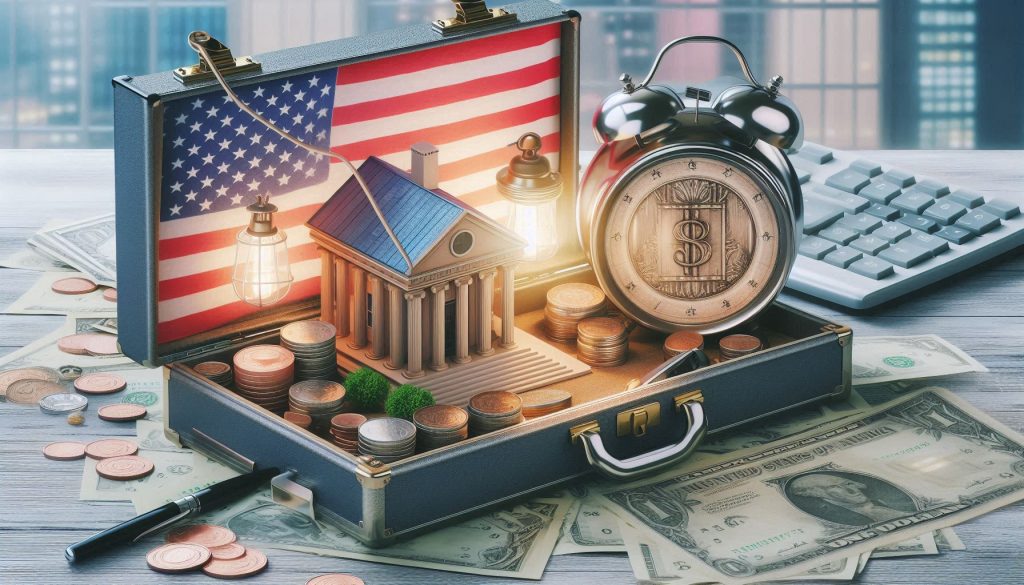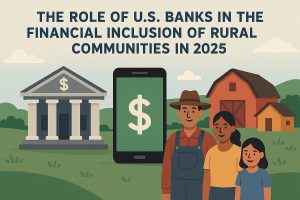Saving money is crucial for financial stability, but where you keep it matters just as much. With so many banking options in the United States, from traditional institutions to online banks and credit unions, the choice can feel overwhelming. Picking a secure, trustworthy bank goes beyond interest rates or accessibility; it requires understanding financial protections, bank reputations, and the security measures that keep your money safe.
A wrong decision could expose you to risks like fraud, hidden fees, or bank failures. While the U.S. banking system regulates deposits up to a certain limit, not all banks offer the same security. Understanding what makes a bank safe gives you confidence in your financial future. From federal deposit insurance to fraud protection, several factors should guide your choice when selecting a bank to safeguard your savings.
What makes a bank truly safe? Looking beyond the basics

FDIC insurance: your first layer of protection
One of the most essential factors in determining a bank’s safety is its membership in the Federal Deposit Insurance Corporation (FDIC). This independent agency protects depositors by insuring up to $250,000 per depositor, per bank, per ownership category. Even if a bank fails, your money—up to the insured limit—is safe. Choosing an FDIC-insured bank should always be a priority to ensure your hard-earned savings remain protected.
While FDIC insurance is a non-negotiable security feature, some banks may offer additional layers of protection. Some financial institutions carry excess deposit insurance, covering balances beyond the standard FDIC limits. However, this is less common and usually seen in specialized banking services. If you tend to keep more than the insured limit in a single account, consider diversifying your deposits among multiple banks to maximize coverage.
Financial stability and reputation: the strength behind the name
A bank’s financial health is just as important as its insurance policies. Not all banks are equally stable, and some may be at greater risk of financial distress. To evaluate a bank’s stability, look at its credit ratings from agencies like Moody’s, Standard & Poor’s, or Fitch Ratings. These agencies assess a bank’s ability to manage risk, meet financial obligations, and remain solvent during economic downturns.
Reputation also plays a major role in banking security. A bank that has been around for decades with a strong track record of customer trust and stability is generally a safer bet than a newer institution with little history. Researching customer reviews, recent news reports, and regulatory actions can help you identify any red flags. If a bank has a history of frequent lawsuits, cybersecurity breaches, or financial troubles, it might not be the best place to store your savings.
Security measures: how banks protect your money
Fraud prevention and account security
With financial fraud and identity theft on the rise, a bank’s security infrastructure is a crucial factor in your decision. Safe banks invest heavily in fraud detection systems, multi-factor authentication, and encryption technologies to ensure that your funds and personal information remain protected. Features such as instant fraud alerts, biometric logins, and virtual card numbers add an extra layer of defense against unauthorized access.
Some banks go even further by offering zero-liability fraud protection, which means you won’t be held responsible for unauthorized transactions as long as you report them promptly. Additionally, advanced fraud monitoring systems can detect suspicious activity and alert you immediately. When choosing a bank, it’s worth asking about their fraud protection policies and how they handle potential breaches.
Customer service and dispute resolution: your safety net in case of issues
Even with strong security systems, problems can still arise, and when they do, efficient customer service becomes a critical factor. A safe bank should have multiple support channels, including phone, chat, and email, allowing customers to quickly resolve issues related to fraudulent transactions, locked accounts, or technical problems. Banks that offer 24/7 customer support are generally more reliable in emergencies.
It’s also important to check how a bank handles disputes. If you ever face unauthorized charges or issues with transfers, a trustworthy institution should have a clear and fair resolution process. Banks with a strong reputation often resolve disputes efficiently, ensuring customers don’t lose money due to errors or fraud. On the other hand, a bank with a history of poor customer service or unresolved complaints might not be the best option for your savings.
Choosing the best bank for your needs: safety without sacrificing convenience
Traditional banks vs. online banks: balancing security and accessibility
Traditional brick-and-mortar banks are often perceived as safer because of their long-standing presence and extensive regulatory oversight. However, online banks have become a popular alternative due to higher interest rates, lower fees, and modern digital security measures. When comparing these options, it’s essential to evaluate both security and convenience.
Many online banks are just as secure as traditional banks, provided they have FDIC insurance and strong cybersecurity protections. The main difference lies in accessibility—while online banks offer mobile banking and higher savings rates, they may lack in-person service. Traditional banks, on the other hand, offer branch access, ATMs, and face-to-face assistance, which can be beneficial for those who prefer personal interactions when managing finances.
Reading the fine print: avoiding hidden risks
Even if a bank meets all security standards, you should still carefully review its terms and conditions. Some banks have hidden fees that can slowly eat away at your savings, including monthly maintenance fees, excessive withdrawal penalties, and inactivity fees. A safe bank isn’t just one that protects your money from theft—it’s also one that doesn’t charge unnecessary costs that diminish your savings over time.
Additionally, understanding a bank’s account policies is crucial. Some institutions have strict limits on fund transfers, mobile check deposits, and international transactions, which might not align with your financial needs. Checking these details in advance will help you choose a bank that is both safe and practical.
Making a secure and informed decision
Selecting the safest bank for your savings in the United States requires careful research and attention to detail. Prioritizing FDIC insurance, financial stability, security measures, and customer service will help ensure your money is protected. Whether you choose a traditional bank or an online institution, understanding the risks and benefits will allow you to make a well-informed decision that aligns with your financial goals.
A safe bank is more than just a place to store money—it’s a partner in your financial journey. By taking the time to evaluate your options, you’ll not only protect your savings but also gain confidence in your banking choice. Your financial security starts with the right decision, so choose wisely and give your savings the protection they deserve.






